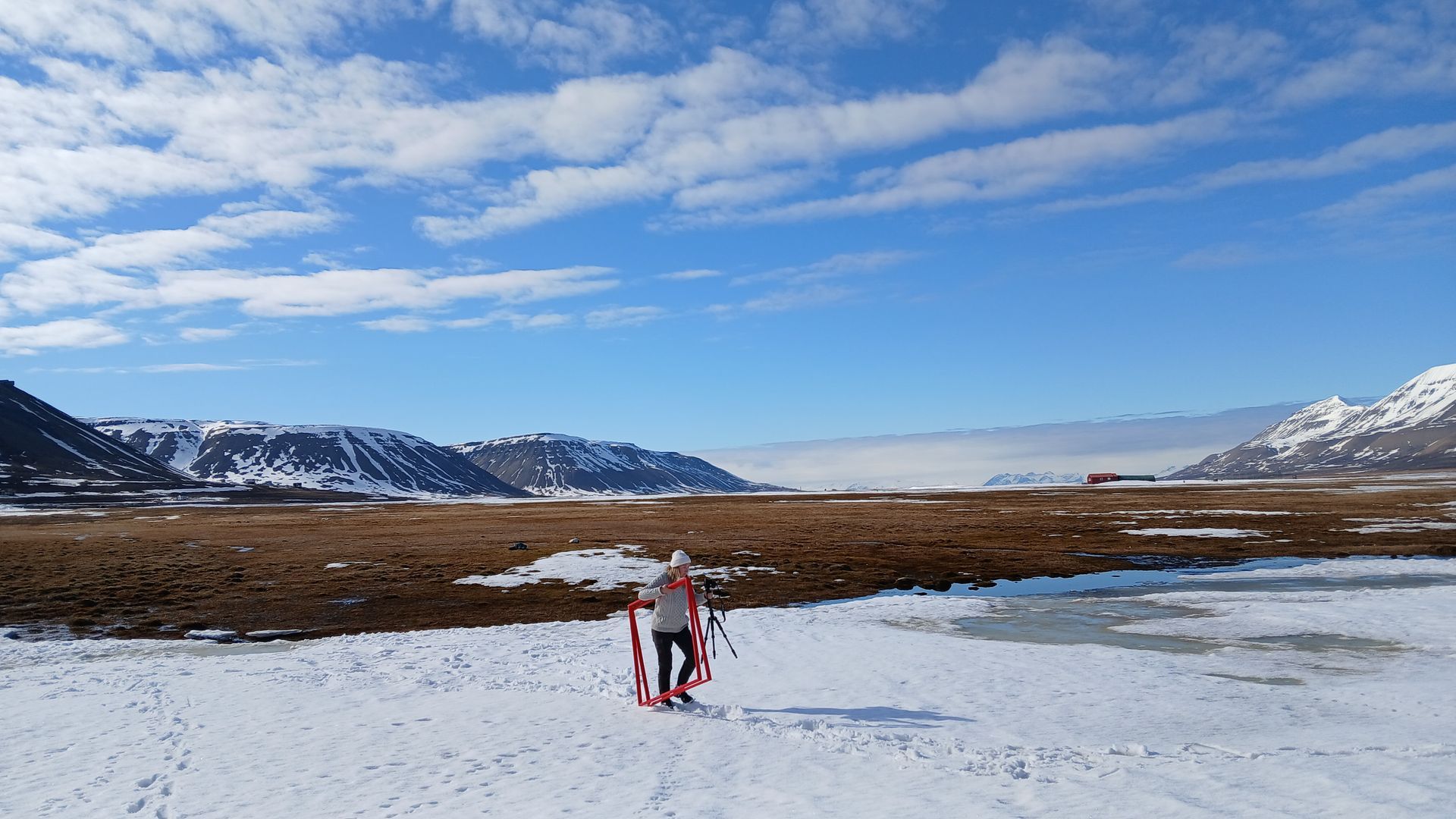Connected- with the ocean current from coast to coast
Borebreen in Borebukta- Spitsbergen
Climate change and plastic pollution in the Arctic were my topics when I was artist in residence on Spitsbergen in May 2025. My focus was on the effects of glacier melting on the ecological balance of the Wadden Sea and thus on the migratory birds that need to rest and feed on the mudflats to gather enough energy for their onward flight of more than 4,000 km. The ocean currents and their drifting of plastic waste, as well as the drifting of sea ice and its impact on whaling in Spitsbergen (1740–1798), were part of this exhibition.
Exibition, Artists Center Spitsbergen, Spitsbergen
31. Mai - 15. Juni 2025
Photographs on the wall
Installation 1 x 1 meter (red frames):
1 x 1 meter is the size of a frame used by scientists to research and determine the number of living organisms (fauna and flora). The frames were installed in 2007 in the Wadden Sea (photograph on the wall) and in 2025 in Adventdalen, Spitsbergen (image on the first monitor).
If the sea level rises even further due to glacier melt the animals in the wadden sea become extinct and the migratory birds will lose their place to feed on the flight south and north. The wadden sea must dry out twice a day to maintain ecological balance. The tidal range is up to 4 meters.
“Landgewinnung” (video on the second monitor, Video: see on page Videos):
“Land reclamation” encourages scientists to research where and how people can live in the future if sea levels rise. The newly built plots of land will rise and fall with the water level.
44 ice cubes:
Plastic pieces found on the coasts of Spitsbergen, frozen in ice. One liter of sea ice in the arctic can contain more than 12.000 pieces of plastic.
Sea ice:
Roelof Olpherts Meeuw (1744–1805)
Roelof Olpherts Meeuw is my maternal ancestor. His diary (logbook) is part of our family history on the North Sea island of Borkum and the history of whaling.
Report by sailor Harm Kröger, whaling ship “Wilhelmina,” 1779:
On May 30, 1777, 100 whaling ships from various countries were trapped in ice off the northwest coast of Spitsbergen. Every day, they drifted thirty kilometers westward toward the east coast of Greenland. At the beginning of August, 10 ships were still trapped in the ice. All of them sank, and on October 11, 286 people from various nations were standing on the ice near the southern tip of Greenland. Of the 450 whalers, 300 lost their lives, while the others were rescued by Inuit and missionaries from Neuherrnhuth (now Nuuk).
Borebukta, Spitsbergen
The Wadden Sea – 100 meter- Nature or Plastic
Grant from the VG Kunst-Kunst, Germany
Island of Borkum:
After a scientific exchange with Dr. Holger Freund from the Institute for Chemistry and Biology of the Marine Environment, University Oldenburg I decided to carry out a scientifically accurate waste monitoring on the island of Borkum. I chose a section of beach of 100 m length and wide from low tide to the foot of a sand dunes chain of 5 m hight. The starting position was in the GPS data from 53`606349 North and 6`654196 East. From December 2021 to February 2022 I counted the plastic trash and used the OSPAR Marine Litter Monitoring Survey Form to file it. After several storms in January and February 2022 with extreme flooding my sand dunes chain was completely (after it existed for 15 years) washed to the sea. I took photos and videos. I archived the plastic waste from a size up to a quarter of a square meter. The larger pieces of plastic waste were collected in a specific container for trash found at the shore. A nine square meter large metal plate had to be collected with a bulldozer. Photographs and videos were taken, building in their aesthetics a contradiction to the devastating consequenses of plastic waste entering the ocean.

After the flood








